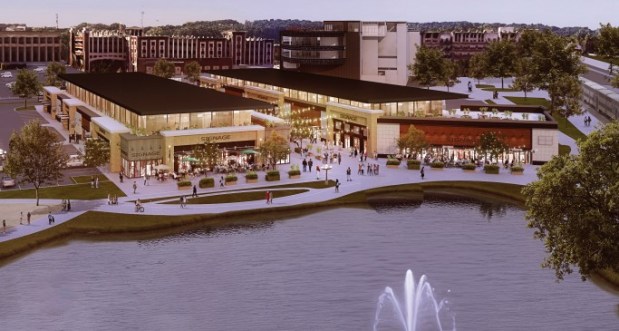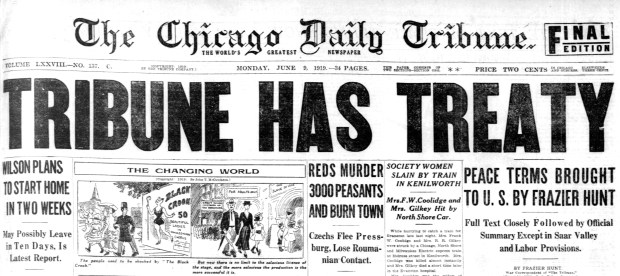Plans for Orland Park’s downtown development are advancing, with a mix of retail, restaurants and entertainment and shepherded by a firm that hopes to break ground this fall.
More steps have to happen first, including establishment of a revised tax increment financing district.
The Village Board approved a special use permit Monday for the planned development northwest of La Grange Road and 143rd Street. The village owns seven properties spread over nine acres.
Edwards Realty, based in Orland Park, is proposing more than 140,000 square feet of commercial and office space and a larger park in the center of the site.
The development would be situated around the Ninety7Fifty on the Park apartments, University of Chicago Medicine Center for Advanced Care, a parking garage and the 143rd Street Metra station.
It’s often referred to as the Main Street Triangle because of the larger 27-acre property’s shape.
The village hired Edwards in March 2021 to consult on potential uses for the village-owned land, and Orland Park, in May 2022, approved a conceptual master development plan with Edwards.
The term triangle comes from the site’s northern border of the Metra SouthWest Service line and Southwest Highway, eastern border of La Grange Road and southern border of 143rd Street.
“This is a well thought out project for the remaining land,” Mayor Keith Pekau Monday as plans were discussed.
“We’re doing something with this to make it a very unique space, I think different than the rest of Orland Park,” he said.
Trustee Sean Kampas noted the review of the project so far has taken time to ensure it’s a good fit for the site. Officials said Edwards’ plans do not include any residential development as part.
“This has been a very thorough, rigorous and transparent project,” Kampas said.
Edwards anticipates a total project cost of $80.5 million, and could be reimbursed for up to $33 million in costs through tax increment and other sources.
Plans propose reconfiguring Crescent Park Circle, which wraps around Crescent Park, and leave Jefferson Avenue north of 142nd closed to vehicles and serve as a pedestrian strip.
Plans from Edwards propose 37,000 square feet of mixed office space, 84,000 square feet of retail and other commercial and 26,000 square feet of entertainment space.
An expansion of Crescent Park, to be renamed Heroes Park, is included, and what is now a stormwater detention pond in the northeast corner of the triangle would be enhanced with fountains.
A walkway would overlook the pond, and archways defining a central pedestrian promenade between the pond and 142nd Street and dividing two commercial buildings with rooftop restaurants, according to plans.
A traffic study submitted indicated streets inside the triangle would be able to handle traffic, and a total of 1,456 parking spaces would be available, although the goal is to encourage walking through most of the planned development.
That parking figure includes the existing 574-space elevated parking garage and Metra parking.
Parking in the Metra lots is free on weekends and after 3 p.m. on weekdays, and while some of the spaces in the garage are reserved for the hospital clinic, that is largely available in the evenings, according to the village.
Multiple phases would take place, and the Village Board could approve individual phases without the need for further Plan Commission review, according to the proposal.
The Village Board could, however, at its sole discretion, send any phases of development back to the Plan Commission.
Some of the money to pay for the project would come from a 1% increase on the sales and hotel tax imposed on businesses within the district, with the tax in place for up to 23 years.
That would be on top of the village’s home rule sales tax of 1.25%.
A special service area would be created within the development and use property tax money to pay for things such as road maintenance, stormwater infrastructure, maintenance of common space and park areas and seasonal decorations for common areas.
In a TIF district, property taxes for all government bodies are frozen at levels at the time the TIF is created and any increase due to higher property values, the increment, is used to pay for improvements or incentives. TIF districts typically expire after 23 years but can be extended to up to 35 years.
The triangle’s TIF first tax year was 2003, and the thinking by village officials is by the time much of the development is completed, the TIF will have expired or have just a few years of life left.
A revised TIF would be created and need approval from village officials and other affected taxing bodies, such as school districts.




